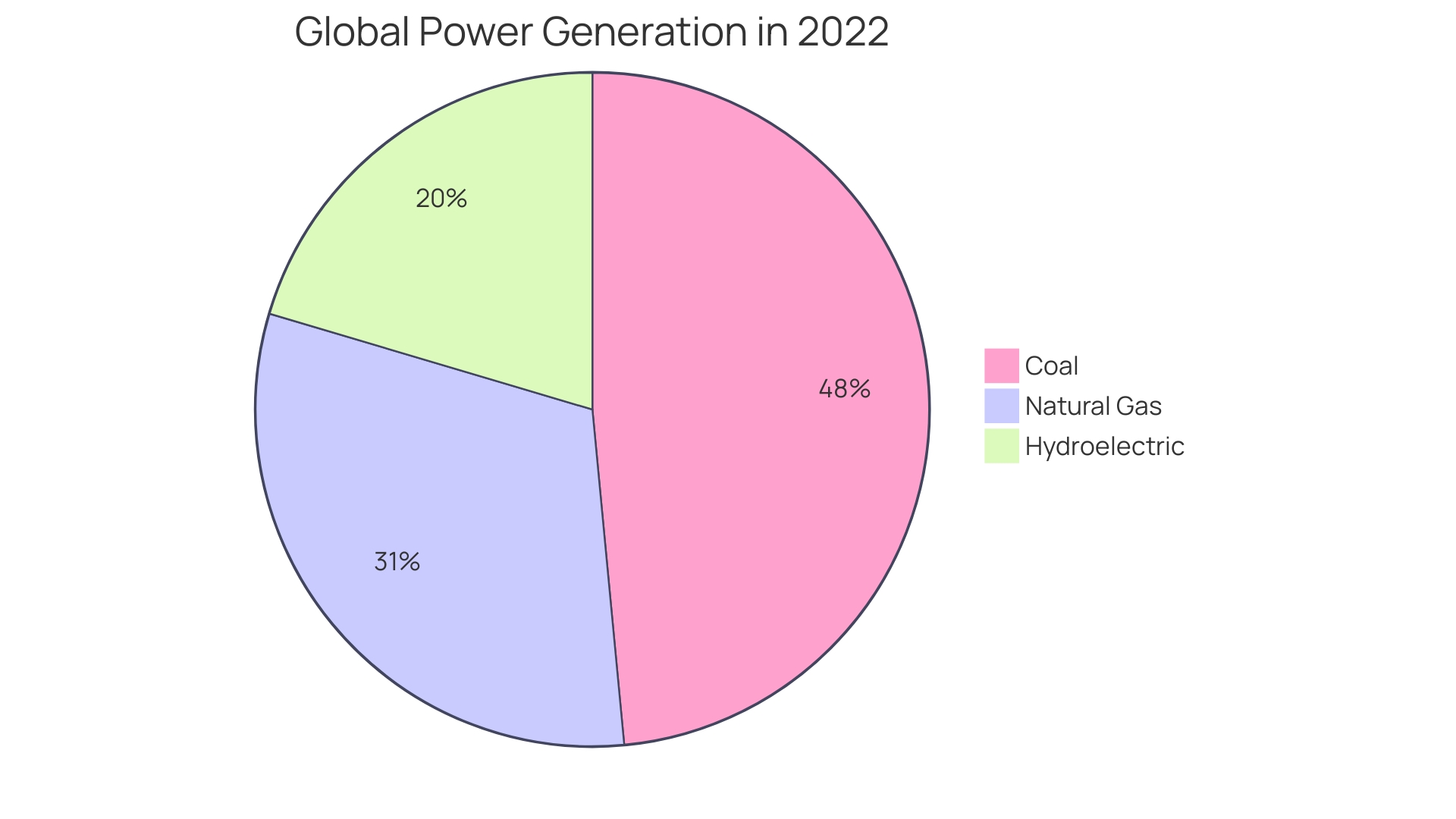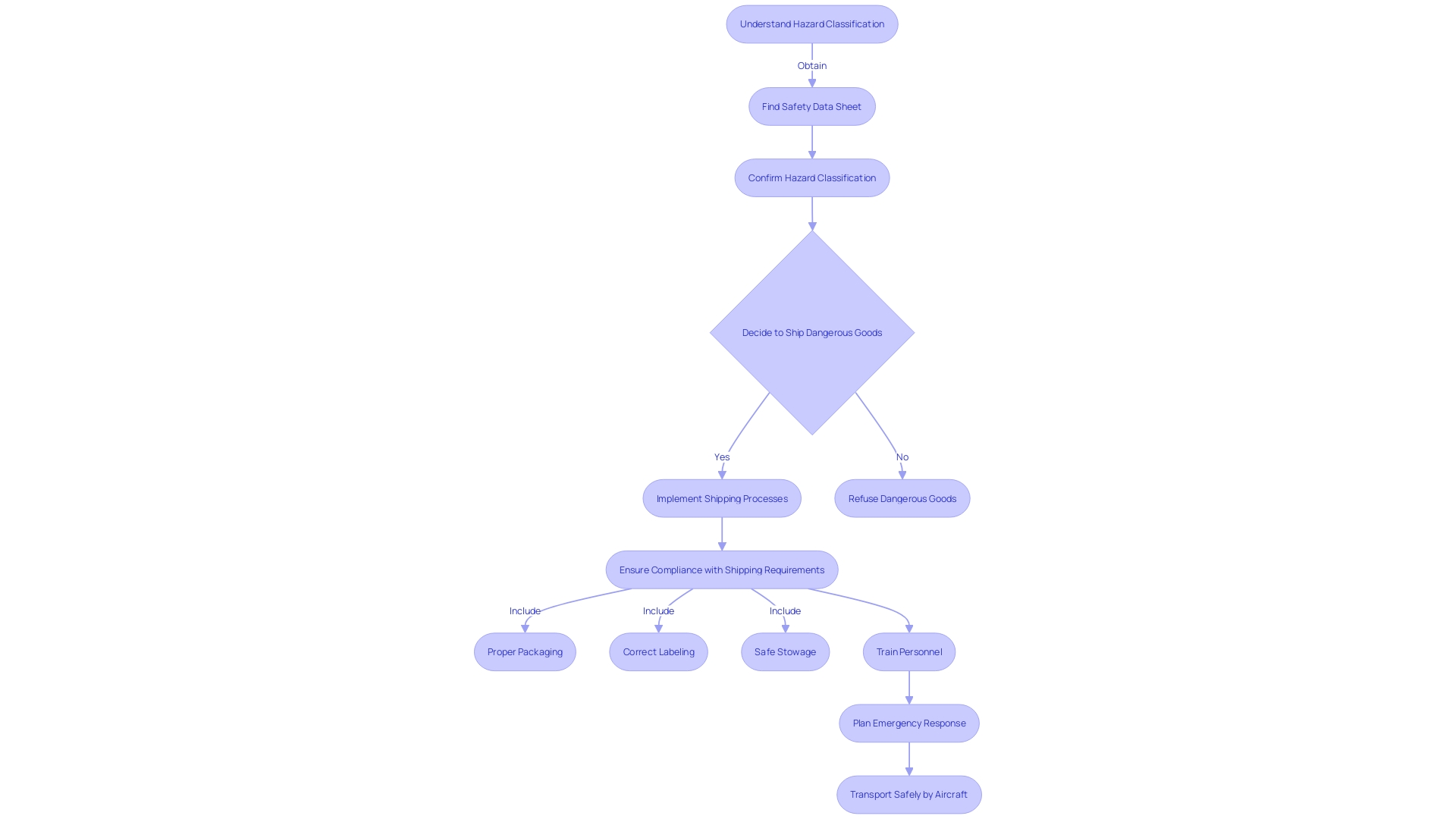Introduction
Fuel types play a vital role in various industries and daily activities, but they also carry distinct risks and considerations. Understanding these risks is crucial for ensuring safety and efficiency in fuel management. In this article, we delve into the different fuel types and their associated safety profiles, highlighting the importance of meticulous fuel handling.
We explore the components of a safety fuel cell and the advancements in fuel cell technology that contribute to safer fuel utilization. Additionally, we discuss best practices for safe fuel storage and handling, emphasizing the need for a systematic approach and comprehensive safety measures. The article also emphasizes the significance of routine checks and emergency procedures in identifying and mitigating potential hazards.
We draw parallels from industries with robust safety cultures, such as commercial aviation, to underscore the critical nature of stringent safety protocols in fuel handling and storage. Furthermore, we explore the importance of personal protective equipment (PPE) in ensuring the safety of individuals handling fuels, particularly in innovative energy sectors. Lastly, we discuss the importance of emergency response and spill cleanup procedures in minimizing environmental damage and ensuring public safety.
By integrating comprehensive safety training and regular drills, we can foster a culture of safety awareness and reduce the incidence of accidents and injuries in fuel handling. Overall, this article provides technical insights and analysis for an audience with a deep understanding of the renewable fuels industry.
Understanding Fuel Types and Associated Risks
Fuel types are indispensable to numerous sectors and daily activities, yet they carry distinct risks and considerations. As we delve into commonly used fuels, it's clear that the safety profiles vary significantly. For instance, coal, oil, and natural gas have been traditional energy mainstays, but their combustion can result in notable fatalities.
Data shows that coal is associated with approximately 25 deaths per terawatt-hour of electricity produced, while oil and natural gas are linked to 18 and 3 deaths, respectively. On the other hand, renewable sources like wind, solar, and nuclear power present far fewer risks, with less than 0.1 deaths per terawatt-hour. Nuclear energy, in particular, stands out as one of the safest due to its high energy output and low fatality rates, contrary to widespread beliefs.
While commercial aviation is lauded as highly safe owing to its robust safety culture, adverse weather conditions at airports can lead to operational disruptions. Similarly, the energy sector grapples with its own set of challenges, such as catastrophic wildfires exacerbated by a few key utilities in regions like California. These fires underscore the complex interplay between safety standards, economic considerations, and reputational risks for energy companies.
Fuel safety extends beyond direct human impact to include the effects on equipment. In diesel engines, for example, using incorrect fuel types like unleaded gasoline can strip away necessary lubrication, causing damage. Conversely, diesel in a gasoline engine won't ignite as required, leading to a range of mechanical issues.
Such insights highlight the critical nature of understanding fuel properties and the imperative for meticulous fuel management to ensure safety and efficiency.

Components of a Safety Fuel Cell
Safety fuel cells are essential components in the energy sector, designed to ensure the safe operation and storage of fuels. Kohler Energy, renowned for its energy resilience solutions, has developed the KOHLER Fuel Cell System, a prime example of a sophisticated energy system that contributes to safer fuel utilization. This system is currently set to support Klickitat Valley Health's power strategy, demonstrating the practical application of such technologies in critical settings.
Toyota, another industry giant, has been expanding the use of their fuel cell technology beyond transportation, providing power to various products with the only emission being water. This highlights the versatility and environmental benefits of fuel cell systems.
Safety concerns around fuel cells, particularly those involving hydrogen, have been addressed through rigorous testing. A significant focus has been placed on drop tests by Powerup and the Estonian Military, which simulate real-world scenarios to prove the safety of hydrogen cylinders. These tests aim to dispel the misconceptions stemming from historical events like the Hindenburg disaster and reassure the public about the safety of modern hydrogen fuel cells.
Research advancements have led to the improvement of fuel cell durability, such as the development of fatigue-resistant membranes by a recent study (DOI: 10.1002/adma.202308288). This innovation is crucial for the operational longevity of fuel cells, as it addresses the issue of membrane degradation during the fluctuating power demands of vehicles.
Venair's VENA® PEM CELL is a testament to innovation in the Hydrogen PEM (Proton Exchange Membrane) Technologies field. It showcases the company's commitment to developing specialized materials that can withstand the unique challenges posed by contaminants, permeability, and conductivity.
With the hydrogen fuel cells market expected to grow significantly, driven by the demand for electric vehicles and environmental concerns, the safety and efficiency of these systems are paramount. Utility-scale battery energy storage, which includes hydrogen fuel cells, has become safer and more regulated, with installations increasing sevenfold since the end of 2020, according to Q3 2023 statistics.
Furthermore, the International Energy Agency (IEA) predicts a substantial increase in the annual production of low-carbon hydrogen, with water electrolysis-based production poised to play a significant role. This surge in low-carbon hydrogen production aligns with the broader goal of achieving carbon neutrality and underscores the importance of safety fuel cells in the sustainable energy landscape.
Best Practices for Safe Fuel Storage and Handling
Safeguarding fuel resources is a pivotal aspect of maintaining safe and effective operations. Best practices in fuel storage and handling are not just about compliance; they're about reducing risks and ensuring that the energy that powers our world is managed responsibly. A systematic approach to these practices is essential, particularly when it comes to storage containers, labeling, and handling procedures.
To start, understanding the hazard classification of fuel products is crucial. This includes obtaining the Safety Data Sheet (SDS) for each product and confirming its classification with the manufacturer or previous offeror. This knowledge is the foundation for implementing adequate processes and controls to ensure safe handling of fuels.
When discussing storage, it's imperative to focus on the design and integrity of containers. For instance, Wärtsilä, a leader in smart technologies, emphasizes a project-specific approach to safety, incorporating fire science insights into product design to meet customer and regulatory requirements. Their collaboration with stakeholders and adherence to Hazard Mitigation Analysis (HMA), including Fire Risk Assessments, set a standard for responsible fuel storage.
Moreover, education plays a vital role in advancing safe fuel practices. For example, Argonne National Laboratory's partnership with Waubonsee Community College to evaluate Sustainable Aviation Fuels (SAFs) using the GREET model demonstrates the importance of academic involvement. Such educational initiatives prepare the next generation to understand and implement clean energy solutions with a focus on life-cycle impacts.
Labeling is another critical component. It is not just about marking containers correctly but also about ensuring that all stakeholders, including those in rapidly growing sectors like e-commerce, are aware of the contents and associated risks. This awareness is essential for safe storage and transportation, particularly in air freight, where the risks are magnified.
Handling procedures must also be meticulously designed and followed. Take the example of storing portable generators: experts recommend storing them with an empty gas tank to prevent fuel degradation and potential hazards. This practice, while seemingly counterintuitive, is a strategic approach to readiness and safety.
Transporting fuels safely is also a subject of ongoing research and innovation, as seen in the construction of the Hydrogen Terminal at the Technical University of Braunschweig. This research project, aiming to decarbonize part of the sector, underscores the dynamic nature of fuel handling and the need for continuous development in safety practices.
Finally, it's worth noting that when it comes to responding to emergencies involving fuel, having a thorough Emergency Response Plan (ERP) in place is indispensable. This plan should be informed by comprehensive risk assessments and include clear actions for dealing with incidents, ensuring that all operations involving fuel are carried out with the highest safety standards in mind.

Routine Checks and Emergency Procedures
Ensuring a safe environment for fuel handling is a multi-faceted task that requires vigilant oversight and strict adherence to safety protocols. The foundation of maintaining such an environment is built upon regular inspections and comprehensive emergency procedures. Through routine checks, fuel quality assessments, and leak detection, potential hazards can be identified and mitigated before they escalate into full-blown crises.
A poignant example of the importance of these measures was the state of emergency declared in October 2021 in Iqaluit, where fuel contamination was detected in a water treatment plant. This incident underscores the critical nature of emergency response plans and the rapid mobilization of resources in the wake of such discoveries.
In the realm of aviation, the FAA's Personal Minimums Worksheet for mechanics emphasizes the significance of regular inspections to combat complacency, particularly when tasks are repetitive yet critical to safety. This serves as an effective model for the fuel industry, where a similar checklist can be instituted to ensure every task, from routine maintenance to emergency shutdown procedures, is performed with the utmost diligence.
Furthermore, the recent 17% increase in fire incidents attended by fire and rescue services in England, as reported for the year ending March 2023, illustrates the ongoing risks in fuel environments. This data, coupled with the knowledge that primary fires pose serious threats to life and property, reinforces the need for robust safety checks and practices.
To be truly prepared for emergencies, a detailed understanding of the facility's systems and any potential vulnerabilities is vital. This includes not only a thorough inspection process but also a comprehensive review of maintenance records and the application of advanced preflight practices, as recommended for aircraft safety. By employing a detailed, knowledge-based approach to inspections and emergency procedures, fuel environments can be managed more effectively, ensuring safety and reliability.

Importance of Proper Fuel Handling and Storage
The stakes are high when it comes to fuel handling and storage. A lapse in strict adherence to safety protocols can result in devastating fires, catastrophic explosions, and severe environmental harm. By drawing parallels from industries where safety is paramount, such as commercial aviation, we can emphasize the critical nature of meticulous practices in fuel management.
Commercial aviation has achieved an enviable safety record, with a remarkable drop in accidents over the years, including no fatal accidents or hull losses for jet aircraft in 2023, as per the IATA Annual Safety Report. This record is attributed to a robust safety culture and stringent regulatory compliance, which fuel handling and storage can emulate to mitigate risks.
In the realm of fuel storage, experts suggest unconventional wisdom, such as keeping portable generators with an empty gas tank when not in use. This counterintuitive measure is to avoid the degradation of fuel that can lead to engine clogs and operational failures during emergencies – a lesson in the importance of maintaining equipment readiness through proactive measures. Furthermore, storing fuel in ASTM, UL, or FM-approved canisters separately from the generator underscores the importance of specialized containers for reducing risks.
As the Center for Transportation and the Environment (CTE) champions the cause of sustainable and efficient transportation, it's clear that the broader implications of safety extend to environmental stewardship. Similarly, fuel management must incorporate environmentally sound practices to prevent contamination, aligning with clean, efficient energy initiatives.
The conversation around fuel safety is ever-evolving, just as the dialogue on energy and technology progresses. Inside Energy, Shell's digital channel, provides a platform for continual insights into the energy sector, encouraging ongoing awareness and education.
In summary, the intersection of safety, environmental responsibility, and operational efficiency forms the triad of fuel handling and storage excellence. With the right practices, informed by other high-stakes industries and continuous learning, it's possible to minimize risks and safeguard both personnel and the planet.
Safety Measures During Fuel Handling
In the realm of fuel operations, safeguarding personnel and averting mishaps is paramount. A systematic approach, much like the one utilized in nuclear power plant design, is applied to dissect complex fuel handling procedures into fundamental components for flawless execution. This method not only enhances safety but also fosters a comprehensive understanding of each person's role within the larger safety management framework.
Incorporating such meticulous processes is crucial, particularly in light of the heightened risk of catastrophic events, such as the recent wildfires and the notable tanker incidents reported in both China and Massachusetts. These events underscore the importance of stringent safety protocols and the consequences of their absence.
When dealing with fuel, like hydrogen for fuel cells or LPG for cooking and transportation, workers encounter chemical processes that demand precision and care. The transformation of hydrogen gas into electricity through a fuel cell, for example, involves the flow of electrons through a circuit, creating an electrical current. This intricate operation necessitates robust safety measures, including adequate ventilation to mitigate the risk of hazardous fumes and the use of personal protective equipment (PPE) to prevent direct contact with harmful substances.
The significance of these safety measures is reinforced by the fact that, as Frank's cost iceberg illustrates, the visible costs of an incident are just the tip of the iceberg, with the potential hidden costs ranging from six to fifty-three times more. This highlights the economic impact that can stem from inadequate safety practices.
Furthermore, recent safety standards introduced in Australia for electric and hydrogen-fueled vehicles, which align with United Nations regulations, exemplify the proactive measures being taken to ensure the safety of road users, technicians, and communities. These standards address the risks associated with high-voltage live parts, battery electrolyte, and compressed hydrogen leakage in the event of a crash.
As we navigate the complexities of fuel handling and the potential risks it poses, it becomes evident that a comprehensive, detail-oriented approach to safety is not just beneficial but essential. Integrating these safety measures into everyday operations can significantly reduce the risk of accidents and ensure the well-being of all involved.

Personal Protective Equipment (PPE) for Fuel Handling
Personal protective equipment (PPE) is paramount in ensuring the safety of individuals handling fuels, particularly in innovative energy sectors. For example, workers involved in the new hydrogen fuel initiatives, like the one in Namie town, Fukushima Prefecture, must be adequately protected. Hydrogen, a clean energy source that emits no CO2, has its set of handling risks.
When hydrogen is delivered in small cylinders to fuel cells in homes, workers need protective clothing, gloves, eye protection, and respiratory gear to prevent potential injuries from pressurized gas and chemical exposure.
The Center for Transportation and the Environment (CTE) emphasizes the importance of safety measures in advancing sustainable transportation technologies. Similarly, hazard assessments in the workplace spotlight the risks inherent in the energy sector, including electrocution, falls, and environmental stress. In the case of hydrogen or propane handling, while the risk of electrocution might be lower, the potential for fires and explosions necessitates rigorous safety protocols.
According to TRADESAFE, electrocution is a leading cause of workplace injuries and fatalities, particularly for electricians. The right PPE can be the difference between life and death. This insight holds true across the energy sector, whether dealing with electrical hazards or combustible materials like hydrogen and propane.
The well drilling and service subsectors witness a higher incidence of hazardous conditions and fatalities, underscoring the need for comprehensive PPE for contract workers who often lack sufficient safety training and equipment.
Propane, another fuel with specific safety considerations, requires handling with consumer-grade propane containing at least 90% propane by volume. Seasonal demand spikes in the residential sector for this fuel type point to the necessity of PPE to manage risks effectively.
In conclusion, the adoption of appropriate PPE is not only a regulatory compliance matter but also an ethical imperative to protect those who are at the forefront of fuel handling and clean energy solutions.
Emergency Response and Spill Cleanup Procedures
Rapid and effective emergency response is crucial in the event of a fuel spill or leak, as it can significantly mitigate environmental damage and ensure public safety. Key steps in addressing such incidents include immediate containment to prevent further spread of the contaminant, neutralization of the spilled material, and safe disposal to avoid lasting harm to the environment.
Recent incidents highlight the urgency of a well-prepared response plan. For instance, when fuel contamination was detected in Iqaluit's water treatment plant, swift action was needed due to the area's remoteness and limited access. The situation escalated to a state of emergency, with the government and military deploying resources to provide clean water and set up temporary water purification systems.
This case underscores the challenges faced when dealing with spills in inaccessible locations and the importance of having a robust emergency protocol.
In addition to geographical challenges, technical faults can also lead to significant spills. An engineering firm's investigation into a large onshore spill revealed that a combination of pipeline design flaws, operator errors, and construction issues were to blame. Such findings stress the need for stringent oversight throughout the construction and maintenance of fuel transport systems.
The environmental impact of spills can be devastating, as seen in the Philippines, where a sunken fuel tanker released 800,000 liters of oil, disrupting marine biodiversity and the livelihoods of local communities. This incident serves as a stark reminder of the extensive damage that spills can cause and the necessity for immediate intervention.
Experts emphasize that while advances in tanker safety and wellhead design have reduced incidents, the push towards extraction in extreme environments comes with increased risks. The disaster at Deepwater Horizon is a poignant example of the potential for significant harm and the need for immediate containment and remediation efforts.
International efforts, such as workshops organized under the IMO's Oil Pollution Preparedness, Response and Co-operation (OPRC) Convention, have been instrumental in helping countries develop and update their National Oil Spill Contingency Plans. These initiatives, supported by collaborations with industry stakeholders like IPIECA, underscore the global commitment to improving oil spill response capabilities.
In summary, the complexity of fuel spill emergencies requires a multifaceted approach, incorporating lessons learned from past incidents, adherence to international standards, and a readiness to deploy resources swiftly to protect the environment and public health.

Training and Drills for Fuel Safety
Comprehensive safety training and regular drills are paramount for personnel working with fuel, a practice that is not only regulatory but also essential for maintaining a culture of safety awareness. By focusing on identifying potential hazards, understanding emergency procedures, and managing hazardous materials, employees are better prepared to respond effectively to emergencies, thereby reducing the incidence of accidents and injuries. The energy sector's commitment to such training is evident in initiatives like TÜV Rheinland's launch of Hydrogen Safety Training Courses, reflecting the shift towards renewable energy and addressing the industry's skills gap.
Moreover, the integration of Rapid eLearning platforms in safety training programs demonstrates how the energy industry is adapting to ensure that safety remains a top priority without disrupting the workflow. These efforts are vital, especially in high-stakes environments such as aviation, where the adoption of sustainable aviation fuel (SAF) requires proving its safety and reliability compared to traditional fuels. As public and private investments grow to support SAF, the importance of safety training is underscored by the need for compatibility with existing jet engines and compliance with stringent regulations.
Ultimately, the goal is to ensure a safe, productive, and legally compliant workplace while fostering a proactive safety culture within the organization.
Conclusion
Fuel types carry distinct risks and considerations, making it crucial to understand these risks for safety and efficiency. Renewable sources like wind, solar, and nuclear power present fewer risks compared to traditional energy sources. Advancements in fuel cell technology contribute to safer fuel utilization, addressing safety concerns surrounding fuel cells, particularly those involving hydrogen.
Best practices for safe fuel storage and handling include understanding fuel product hazard classification, container design and integrity, and proper labeling and handling procedures. Education and partnerships with academic institutions advance safe fuel practices. Transportation safety and emergency response plans are integral components of comprehensive fuel management.
Routine checks, fuel quality assessments, and comprehensive emergency procedures maintain a safe environment for fuel handling. The critical nature of stringent safety protocols in fuel handling and storage is emphasized by drawing parallels from industries with robust safety cultures. Proper fuel handling and storage prevent fires, explosions, and environmental harm.
Personal protective equipment (PPE) is paramount in ensuring the safety of individuals handling fuels. Adequate PPE prevents injuries from pressurized gas, chemical exposure, and other hazards. Safety measures during fuel handling, including the use of PPE, should be implemented across the energy sector.
Rapid and effective emergency response is crucial in fuel spills or leaks to mitigate environmental damage and ensure public safety. Immediate containment, neutralization of spilled material, and safe disposal are key steps. Comprehensive safety training and regular drills reduce accidents and injuries.
In conclusion, fuel handling and storage require a comprehensive approach prioritizing safety, environmental responsibility, and operational efficiency. By implementing best practices, drawing insights from high-stakes industries, and continually learning, risks can be minimized, safeguarding personnel and the planet.




